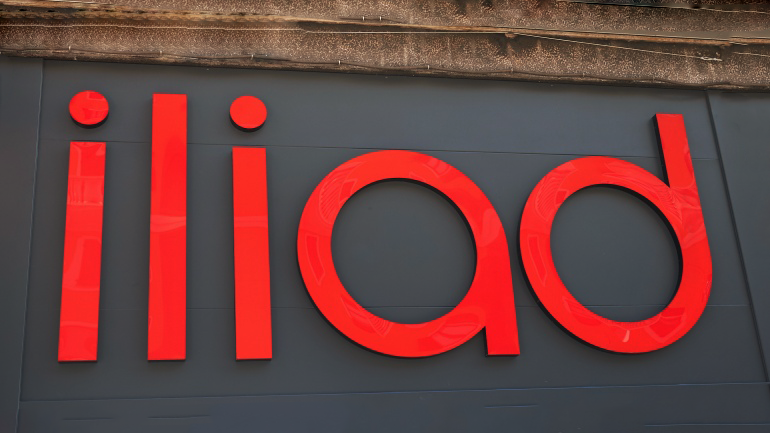The greatest motivation to move forward is to see your own company as your biggest competitor, says Yaniv Masjedi, a visionary and compelling marketing leader at Nextiva. The company’s Chief Marketing Officer since 2008, Yaniv Masjedi has been working to create strategies that drive awareness, strengthen the Nextiva brand, and share the story of the company’s unique customer-centric culture, known as “Amazing Service”. Yaniv Masjedi also initiates and manages programs related to brand management, demand generation and advertising. Read the full interview with this marketing guru to discover his core business principles, what drives the growth of a company, and what are the key factors in measuring success. My career began in sales, and having that background helped me tremendously when I decided to take the leap into marketing. With my sales background, I’m always thinking about how I can improve the experience for prospects, customers, and our sales…
French telecommunications service provider Iliad S.A. has agreed to buy the Polish telecommunications company Play Communications S.A. for $2.6 billion as it expands across Europe. The deal will make Iliad the sixth largest mobile operator in Europe. In an announcement on Monday, the companies revealed that Iliad had offered $10.35 per share for Play and received binding commitments from two controlling shareholders for a 40% stake, which would give it the majority of seats on Play’s board of directors. Iliad also hopes that the deal will allow the company to enter the growing Polish telecommunications market and boost Play’s growth in the mobile sector. With the addition of Play, Iliad will have 41 million subscribers in France, Poland and Italy. However, the transaction still needs to be approved by the relevant regulatory authorities, and a notification of the proposed acquisition has to be submitted to the European Commission.…
Deutsche Telekom will move 18 million users to the cloud Deutsche Telekom has announced that 18 million of its fixed voice customers will soon have their services moved to a new cloud-based telephony platform. The company currently has a next-generation IP multimedia subsystem (NIMS) deployed in telco’s data centers throughout Germany. The platform promises to deliver services faster and more efficiently by automatically allocating voice capacity on the network as needed. The deployment of cloud telephony is a logical next step in Deutsche Telekom’s all-IP strategy, which the company has been pursuing for years. Read more at: https://tinyurl.com/y3oxa9wq ClearlyIP releases a new mobile softphone Telecommunications company ClearlyIP has released “Clearly Anywhere”, a mobile softphone that provides easy mobile integration into FreePBX-based systems. This application is designed for Android and iOS devices, allowing system administrators to quickly set up, configure, and deploy cross functional software that clients closely incorporate with an…
Ribbon announces hybrid slicing for 5G Ribbon Communications, a provider of real time IP-based communications and software solutions, announced that it has partnered with Xilinx Inc. to develop a 5G hybrid slicing solution for next-generation networks. Slicing is important in 5G, as it enables the separate 5G integral service classes. Hard slicing is necessary to meet the strict requirements for availability, bandwidth and security of highly sensitive services, while soft slicing provides benign insulation for services with a lower critical limit value. Ribbon will highlight its 5G solutions, including hybrid slicing, during its 5G Perspectives virtual event on September 14, 2020. Read more at: https://tinyurl.com/y6tm8bqa Oi sells its mobile assets to Claro, Telefónica and TIM Three operators, Claro, Telefónica and TIM, formerly known as Telecom Italia, have won the bid for the Brazilian operator Oi’s mobile assets valued at more than $3 billion. In the past, these operators had a…
Patton VoIP Solutions to use Deutsche Telekom’s SIP services Patton Electronics, a provider of UC, cloud and IoT solutions for carrier, enterprise and industry, has announced that its SmartNode VoIP gateway and eSBC product lines have been tested and are compatible with the new Deutsche Telekom CompanyFlex and DeutschlandLAN SIP-Trunk services. This success is thanks to Patton’s many years of developing innovative hardware, software and cloud based UCC solutions. Patton is committed to continually expanding its extensive cross-certification library. Patton’s SmartNode VoIP Gateways and eSBC will provide key networking features to Deutsche Telekom’s SIP-based business communication solutions. Read more at: https://tinyurl.com/yy5khxgl Liechtenstein offers the fastest broadband in the world Cable.co.uk conducted a study that compares and charts global broadband speeds . At the top of the list is Liechtenstein, with the fastest broadband in the world averaging 229.98 Mbps. The data also revealed that North African countries have the slowest…
Telefonica acquires Govertis Advisory Services The Spanish international telecommunications company, Telefonica, has announced the acquisition of the Valencia-based consulting company Govertis Advisory Services. The procurement was made through its subsidiary the cybersecurity company ElevenPaths. According to Telefonica, Govertis offers solutions that combine both legal and technological aspects of cybersecurity. The purchase of Govertis is related to Telefonica‘s ongoing investments in security through the development of proprietary solutions, the implementation of technologies in the global SOC network, and the acquisition of and investment in new companies. Eduard Chaveli, CEO and founder of Govertis, commented that this deal was a “natural next step in a long-standing relationship”. Read more at https://tinyurl.com/y2lr9pl7 Argentinian government freezes Telco prices Argentina‘s government has extended a ruling applicable to Internet, mobile and pay-TV providers, preventing them from raising their prices until the end of 2020. These measurements were first implemented in May of this year to combat…
DartPoints collaborates with LOGIX for interconnection services in Texas DartPoints and LOGIX are partnering to provide Texas with interconnection. LOGIX’s network will interconnect with DartPoints’ facilities throughout Texas, resulting in enhanced regional connectivity between each endpoint, and providing one-stop access to more than 150 regional, national and international data centers and global websites. With this collaboration between the two companies, DartPoints’ customers will gain access to LOGIX’s extensive fibre network, and get greater access to edge interconnection points. Read more at https://tinyurl.com/y6gy8xwh Voxox and Passage Telecom are launching a cloud phone Voxox, an innovator in cloud communications solutions, and Passage Telecom, Nigeria’s leading ISP, have announced their partnership. Passage Telecom will now offer Voxox Cloud Phone services in Nigeria, which will be hosted from Voxox’s US and European data centers. This is the first deployment of Voxox Cloud Phone on the African continent, while Passage Telecom currently only serves Nigerian…
Pentagon will allow telecoms to use military airwaves for 5G networks On Monday, the Pentagon and the White House announced plans to issue a permit for telecommunication service providers to use air waves that were previously reserved for military radar, to build new high speed 5G networks. This initiative is in response to wireless service providers, who say they need more airwaves to support growing demand for 5G signals. Sales of the 3450-3550 megahertz bands are scheduled to begin in December of 2021. According to Dana Deasy, chief information officer for the Department of Defense, the Pentagon will continue to use this bandwidth for military purposes. Read more at https://tinyurl.com/yy4k4nhb HMD gets $230 million funding from Google, Qualcomm and Nokia HMD Global, Nokia’s brand marketing agency, announced to have secured a $230 million investment from Google, Qualcomm, Nokia and other undisclosed investors. As stated by HMD Global, the funds will…
Microsoft to continue talks to buy TikTok from ByteDance Microsoft has announced that it is prepared to continue discussions for the acquisition of popular short-video app TikTok from Chinese internet giant ByteDance. In a statement, the company said that it is committed to acquiring TikTok “subject to a complete security review and providing proper economic benefits to the United States, including the United States Treasury.” Microsoft made the statement following a conversation between its CEO Satya Nadella and US President Donald Trump. The company said it would ensure that all private data of TikTok’s American users is transferred to and remains in the United States. Read more at https://tinyurl.com/y69w8a4b Samsung’s Galaxy Z Fold 2 is official, comes with a ton of improvements Samsung has officially introduced a range of new premium mobile devices at its Unpacked 2020 event live streamed from Korea. Among others, the company is launching the Samsung Galaxy…
The outbreak of the Covid-19 pandemic has impacted industries and businesses all across the globe and has brought the world economy to a halt, with millions of people placed under lockdown. With most of society working and studying from home, the need for technology has increased considerably, and the significant rise in the use of digital tools during social distancing has put the telecommunications sector at the forefront in facilitating the situation. What kind of impact has Covid-19 had on the telecom sector? Now that the global supply chain has been thrown into chaos and the work-from-home concept has become the “new normal“, the need of remote communication has risen significantly so as to ensure business continuity. The telecommunication sector is witnessing significantly higher demands, as they play a key role in facilitating the connectivity required by customers implementing these essential digital tools . Rise of demand for Telco services…













